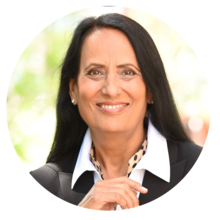About this Presentation
It's been well over 10 years since the book, Necessary but not Sufficient (NBNS) was published and yet the rate of success in IT projects – including, unfortunately SAP implementations, has not dramatically improved. SAP’s own benchmarking and research from other leading ICT research organizations shows that still around 70% of all ICT projects are not deemed a 'great' success. This is despite the fact that the power and coverage of the technology and implementation know-how has grown dramatically. Could theory of constraints help to unlock the inherent value potential of SAP? This paper aims to answer this question, starting with the complexities, trade-offs and uncertainties that make implementing an ERP system such as SAP so challenging. It then provides an overview of how a new NBNS/TOC-based 'ValueERP' process, originally developed by Dr. Alan Barnard at Goldratt Research Labs, was proven effective to unlock more value faster from SAP implementations at for example African Explosives, ABB, Ditch Witch, Daiwa House and BHP Billiton. In 2012, on the initiative of Chris Sims who heads up the SAP Business Transformation Services (BTS) unit for MENA region, SAP MENA (Middle East and North African) formed a research partnership with Goldratt Research Labs to further research and improve this ValueERP process to go beyond just using TOC to implement SAP and / or SAP to implement TOC with SAP MENA clients – one of the fastest growing SAP markets in the world. Chris and Alan will share their experiences and new insights from this research partnership, specifically how they are using NBNS and strategy & tactic (S&T) trees to identify and address the 5 main causes of value being lost within any IT implementation – not just SAP. They also share lessons learned in trying to implement TOC in the SAP services business in the MENA market unit and provide a peak at their future joint research focus on understanding and unlocking the 'real power of a technology such as SAP'.
What Will You Learn
To help you get the most value from this session, we’ve highlighted a few key points. These takeaways capture the main ideas and practical insights from the presentation, making it easier for you to review, reflect, and apply what you’ve learned.

Instructor(s)
Chris Sims

Ms Alka Wadhwa
Alka Wadhwa is an experienced consultant and process improvement expert with over 24 years of expertise in the Theory of Constraints (TOC), Lean Six Sigma, and organizational performance optimization. She has successfully led projects in healthcare, financial services, and manufacturing, driving significant improvements such as a 67% boost in hospital operations and a 140% increase in outpatient visits.
Previously, Alka Wadhwa spent 17+ years at GE Global Research Center, where she led initiatives to enhance various GE businesses through advanced technologies, process redesign, and system optimization. Founder of Better Solutions Consulting, LLC, she specializes in using TOC, Six Sigma, and data analytics to streamline operations and build high-performance teams.
Her work has earned her multiple accolades, including the Empire State Award of Excellence in healthcare.

Dr Gary Wadhwa
Dr. Gary Wadhwa is a Board Certified Oral & Maxillofacial Surgeon with extensive experience in the field. He completed his Oral & Maxillofacial Surgery training at Montefiore Hospital, Albert Einstein College of Medicine in Bronx, NY, and has served as an Attending at prestigious institutions like St. Peters Hospitals, Ellis Hospital, and Beth Israel Hospital in NY. With a career spanning over two decades, he was the former CEO and President of a group specialty practice in NY from 1994 to 2015. Dr. Wadhwa holds an MBA from UT at Knoxville, TN, and has undergone additional training in System Dynamics at MIT, Health System Management at Harvard Business School, and Entrepreneurship and healthcare innovations at Columbia Business School. Committed to expanding access to Oral & Maxillofacial Surgery care, he is currently engaged in a meaningful project to provide healthcare services to underserved populations in inner city and rural areas through non-profit Community Health Centers.
